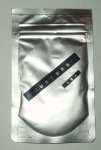-
N&PD Moderators: Skorpio | thegreenhand
-
Neuroscience & Pharmacology Discussion Welcome Guest
Posting Rules Bluelight Rules Recent Journal Articles Chemistry Mega-Thread FREE Chemistry Databases! Self-Education Guide
You are using an out of date browser. It may not display this or other websites correctly.
You should upgrade or use an alternative browser.
You should upgrade or use an alternative browser.
Caffeine
- Thread starter Gaz_hmmmm
- Start date
"euphoric" properties of caffeine can be attributed to their indirect stimulation of dopaminergic neurons in the ventral tagmental area...which in turn will release dopamine in the nuclues accumbens.....thus suggesting its rewarding properties and addicitive properties
did you know the lethal dose of caffeine is 100 cups?.... I'll dig up the actually numeric value if anyone is interested
did you know the lethal dose of caffeine is 100 cups?.... I'll dig up the actually numeric value if anyone is interested
LD what? LD50? LD100? LD Low?
As I remember it, caffeine can be lethal to humans in a 4g dose. Assuming that a decently brewed cup of coffee is 120mg, that's only 33 cups. But like I said, I have no idea what measure of lethal dose you're referring to.
As an aside, is the increase in cAMP resultant from caffeine ingestion comparable to the decrease in cAMP (through adenylyl cyclase inhibition) resultant from opiates? I would think not, but I'm wrong all the time.
As I remember it, caffeine can be lethal to humans in a 4g dose. Assuming that a decently brewed cup of coffee is 120mg, that's only 33 cups. But like I said, I have no idea what measure of lethal dose you're referring to.
As an aside, is the increase in cAMP resultant from caffeine ingestion comparable to the decrease in cAMP (through adenylyl cyclase inhibition) resultant from opiates? I would think not, but I'm wrong all the time.
BilZ0r
Bluelight Crew
- Joined
- Dec 15, 2003
- Messages
- 6,675
I always figured it was a presynaptic action on dopaminergic terminals, but caffeine does increase unit activity in the VTA... though I wouldn't go so far as to say that it is dopamine release in the NAc that gives caffeine it's pleasant effect.. it has a serotonergic effect as well
I am sorry...I didnt mean to over-simplify it....
at the doses of average human consumption...the primary mechanism of action is actually the release of dopamine in the pre-frontal cortex.....must explain all the educated people sitting in my local cafe...
at the doses of average human consumption...the primary mechanism of action is actually the release of dopamine in the pre-frontal cortex.....must explain all the educated people sitting in my local cafe...
Smyth
Bluelighter
- Joined
- Nov 10, 2004
- Messages
- 2,157
There is this: http://www.guarana.com/
From what I can decipher its effects are very similar to caffeine.
I find it odd that your average Joe just thinks that tea/coffee/chocolate all contain caffeine. Whilst this may be true for coffee, I think I remember reading some place that very similar, yet not identical alkaloids exist in tea and chocolate. Yes Jamshyd also is aware of this little artifact.
I think this whole business is an interesting subject though.
Yeah looking at the structure of that 'Theophylline' alkaloid found in tea.
Although it contains three N-H groups, two of these are amides and so only one of these can be alkylated. Indeed, that Fenethylline is a masked amphetamine derivative.
There is a whole raft of other functional groups that could be attached to that nitrogen atom though. It seems inevitable that some exploration of the possibilities must have been attempted by some research body, either an academic or drug company at some stage.
From what I can decipher its effects are very similar to caffeine.
I find it odd that your average Joe just thinks that tea/coffee/chocolate all contain caffeine. Whilst this may be true for coffee, I think I remember reading some place that very similar, yet not identical alkaloids exist in tea and chocolate. Yes Jamshyd also is aware of this little artifact.
I think this whole business is an interesting subject though.
Yeah looking at the structure of that 'Theophylline' alkaloid found in tea.
Although it contains three N-H groups, two of these are amides and so only one of these can be alkylated. Indeed, that Fenethylline is a masked amphetamine derivative.
There is a whole raft of other functional groups that could be attached to that nitrogen atom though. It seems inevitable that some exploration of the possibilities must have been attempted by some research body, either an academic or drug company at some stage.
J. Alfred Prufrock
Bluelighter
- Joined
- Sep 29, 2005
- Messages
- 211
phase_dancer
Bluelight Crew
- Joined
- Mar 12, 2001
- Messages
- 6,179
Caffeine (CRC press)
The other mention regarding guarana:
The analysis of the methylxanthines (caffeine, theobromine, and theophylline) is important in the areas of nutrition and clinical chemistry.
These three compounds compose the majority of the alkaloids present in
coffee, tea, cocoa, cola nuts, and guarana.
The other mention regarding guarana:
Recently, Salvadori and colleagues published a study in which TLC was used as a screening tool for the determination of caffeine, theobromine, and theophylline in samples of horse urine after the horses had ingested guarana powder.
Salvadori, M.C., Rieser, E.M., Ribeiro Neto, L.M., and Nascimmento, E.S., Determination of xanthines by high performance liquid chromatography and thin layer chromatography in horse urine after ingestion of Guarana powder, Analyst, 119,2701,1994

